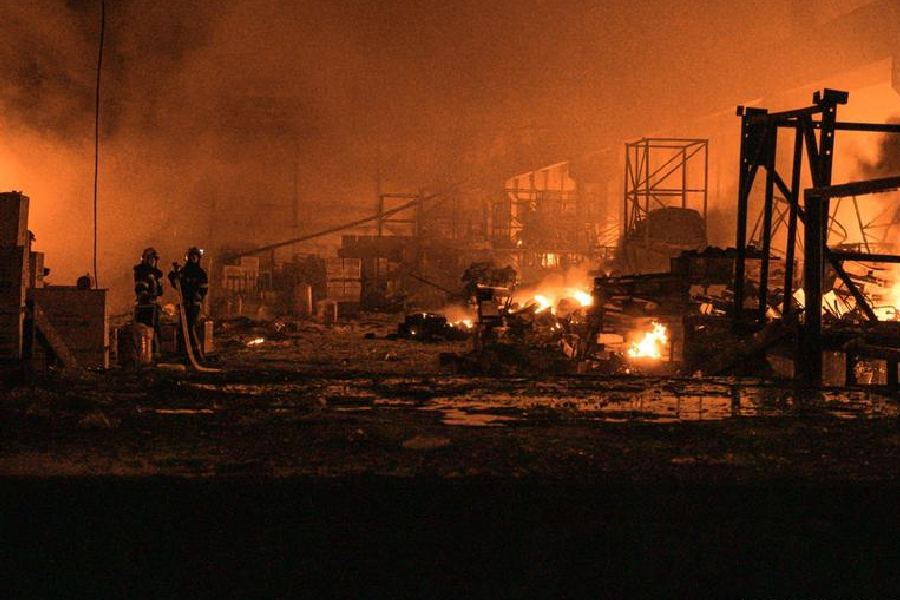The loss of a large reservoir above a blown-up dam in southern Ukraine poses no immediate risk of a meltdown at Europe’s largest nuclear power plant, even though the plant uses the reservoir water for cooling, the head of Ukraine’s state-owned nuclear company said Tuesday in an interview.
That’s because the Zaporizhzhia Nuclear Power Plant was designed to let engineers shut down its six nuclear reactors even in the event the Kakhovka dam were to collapse and the reservoir to drain, as is now happening. The plant can still draw water from a large cooling pond on the grounds.
“There are design conditions which were calculated for this event,” Petro Kotin, the president of Energoatom, said. “There are no dire consequences that are critical for the Zaporizhzhia Nuclear Power Plant.”
Kotin said the plant can be kept safe after losing the reservoir as its primary source of cooling water if the Russian force occupying the site manages it correctly.
“The possibility of a radiation release now depends on their actions, what they have on their minds, what they do with the nuclear materialsin their possession,” Kotin said.
All six of the plant’s reactors are currently shut down but still require water to circulate in their cores to dissipate residual heat from nuclear reactions. Each reactor also needs water for a cooling pond for spent fuel.
Supplying cooling water at the plant now, and perhaps for years to come, will depend on maintaining water levels in the site’s cooling pond, which used to be fed by the reservoir.
The plant has wells that can be drawn on to refill the pond.
New York Times News Service










